Unit 4:Functional Organization of the Peripheral Nervous System
1/67
There's no tags or description
Looks like no tags are added yet.
Name | Mastery | Learn | Test | Matching | Spaced |
|---|
No study sessions yet.
68 Terms
What is the Sensory Nervous System also known as?
Afferent nervous system.
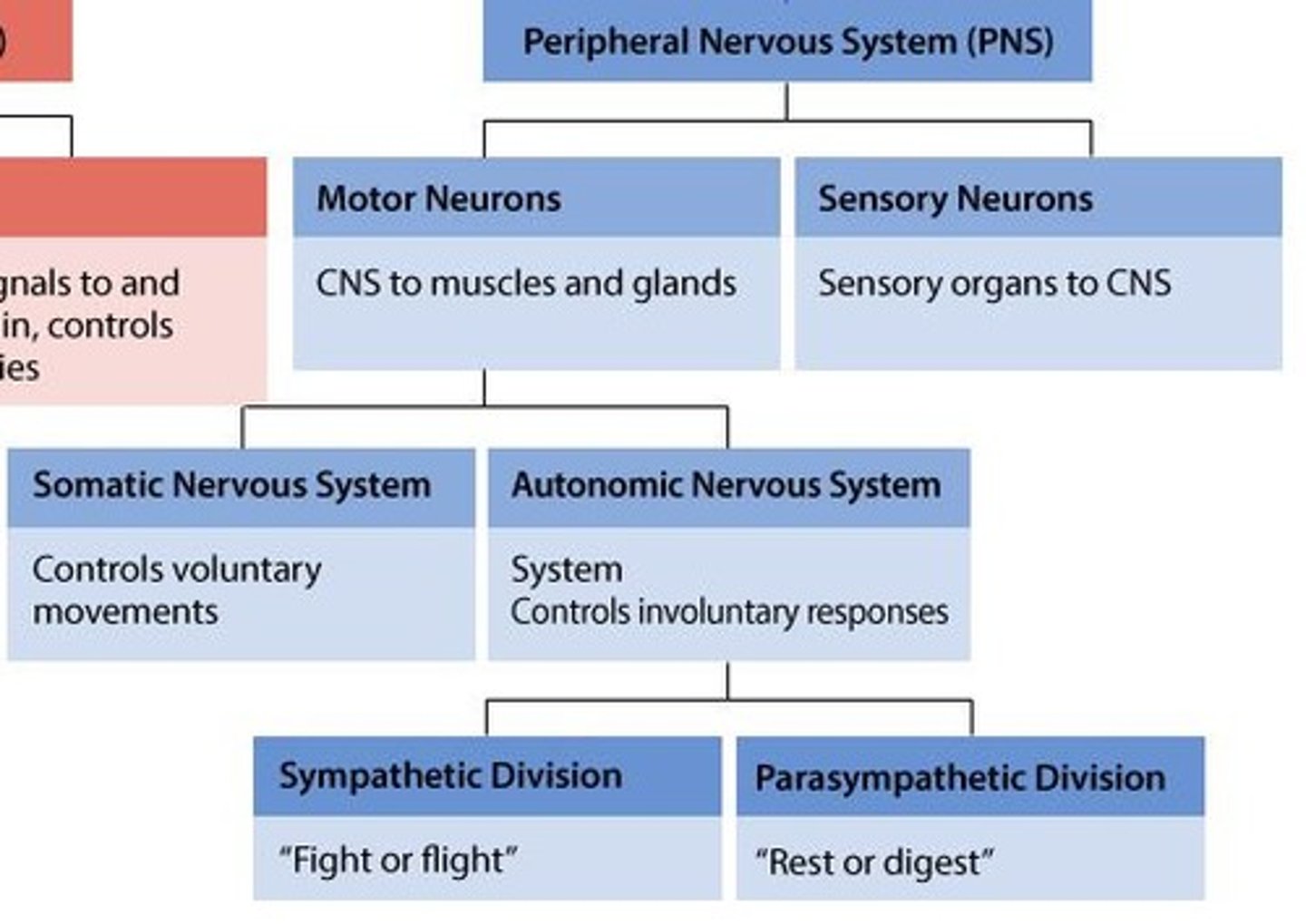
What is the primary function of the Sensory Nervous System?
To convey information (impulses) to the CNS.
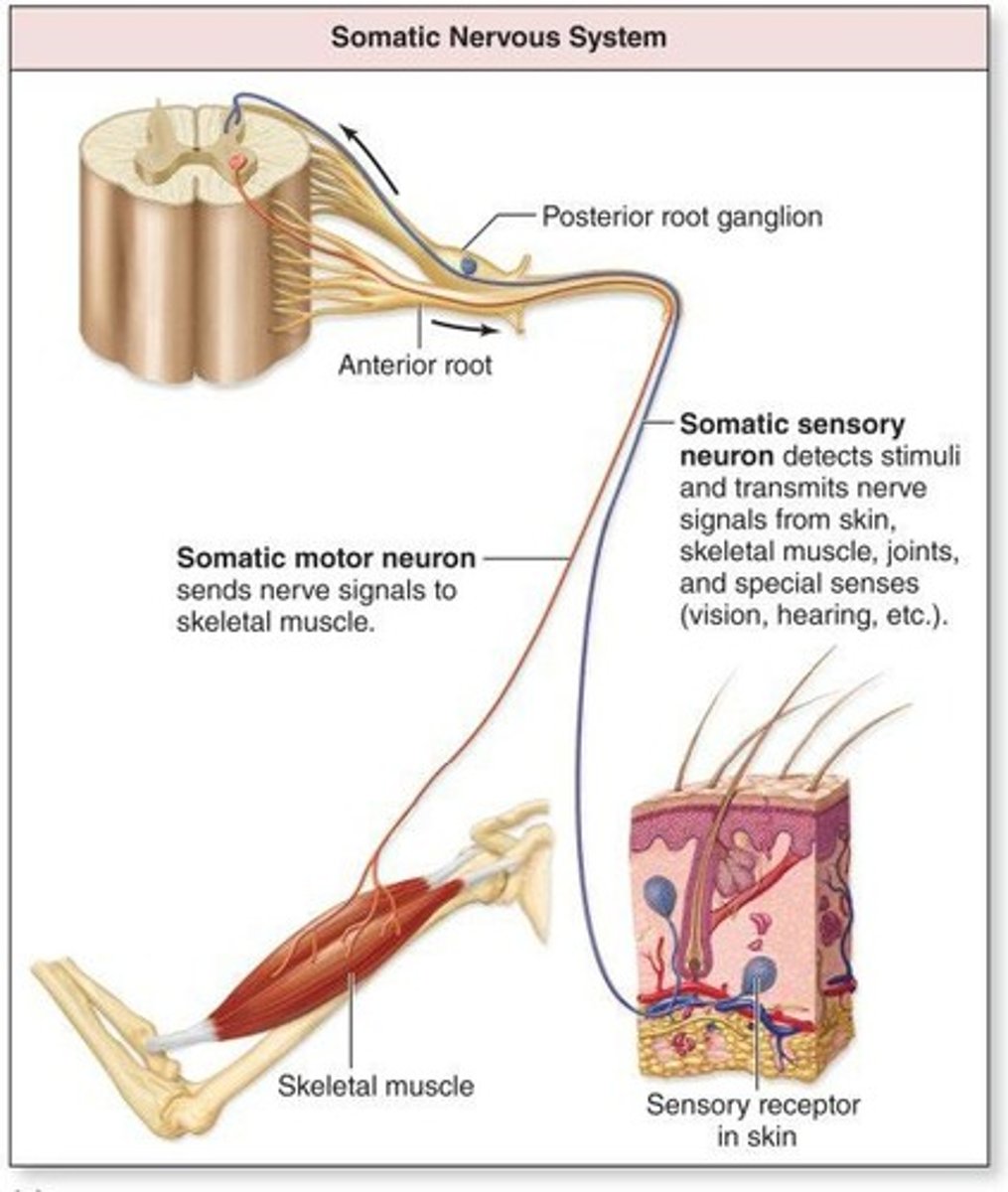
What types of sensory input does the Somatic sensory system include?
Sensory input that is consciously perceived from receptors such as special senses and skin.
What does the Visceral sensory system convey?
Sensory input that is not consciously perceived from the viscera and blood vessels.
What is the Motor Nervous System also known as?
Efferent nervous system.
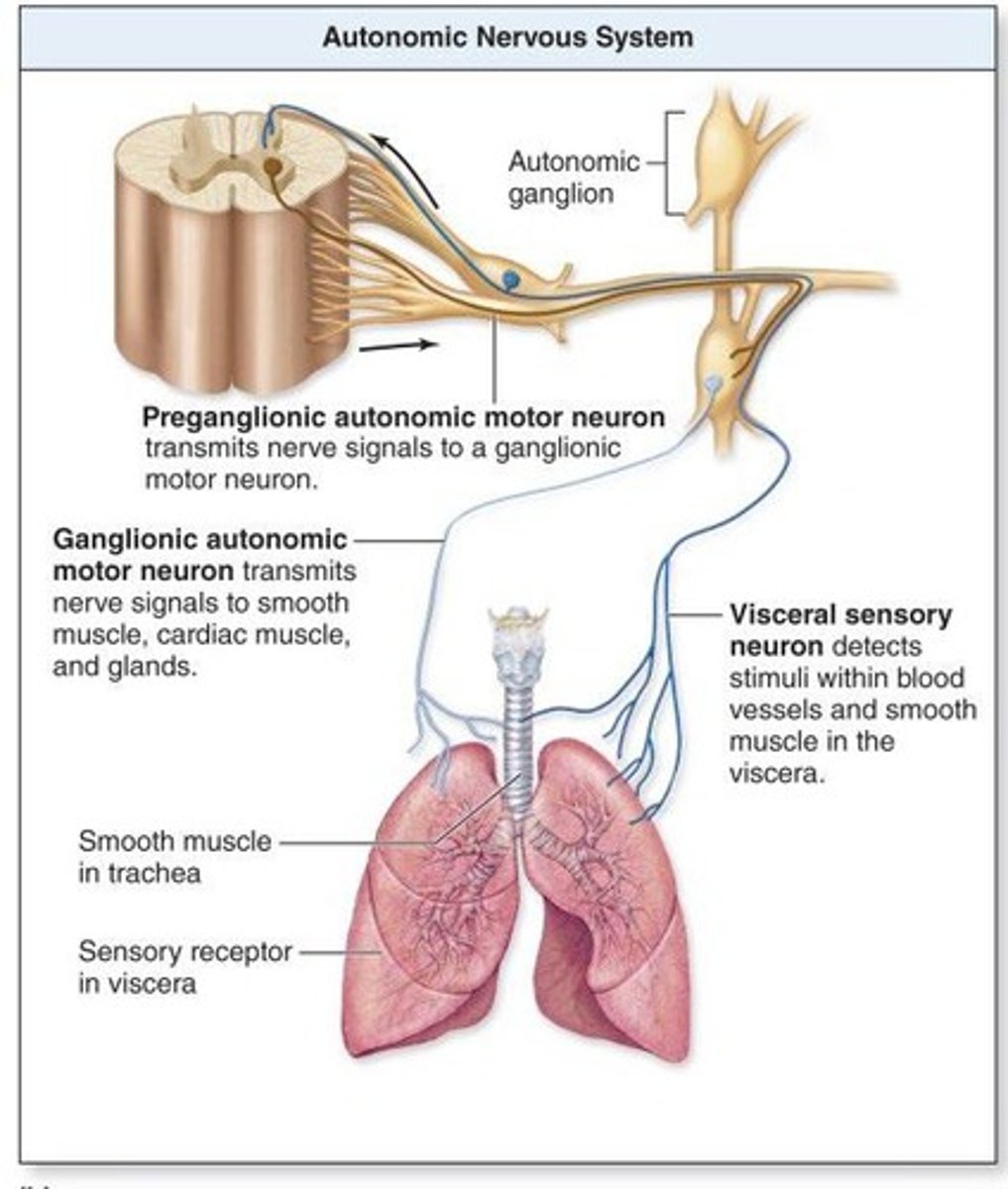
What is the primary function of the Motor Nervous System?
To convey information (impulses) from the CNS to the effector organs.
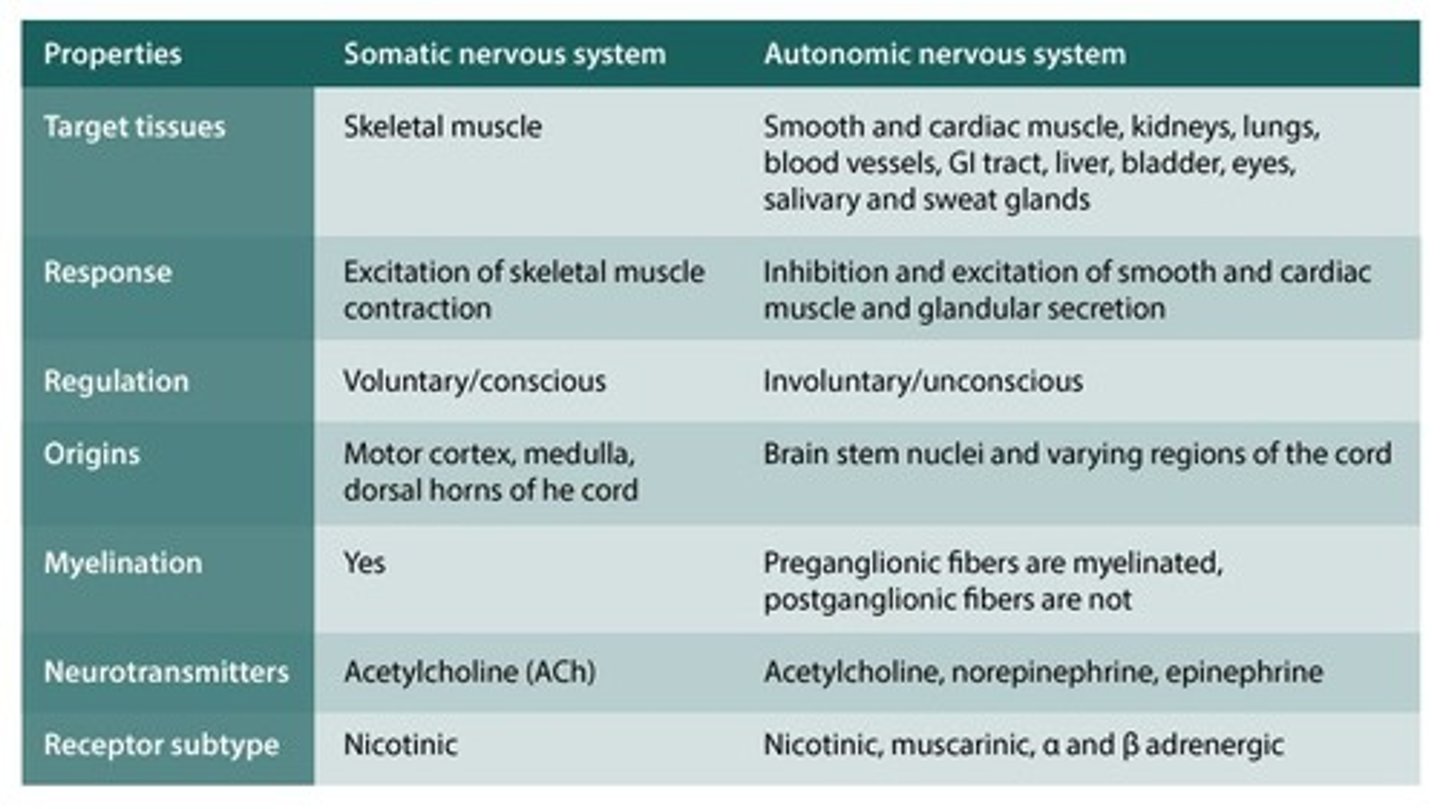
What type of motor output is controlled voluntarily?
Somatic motor.
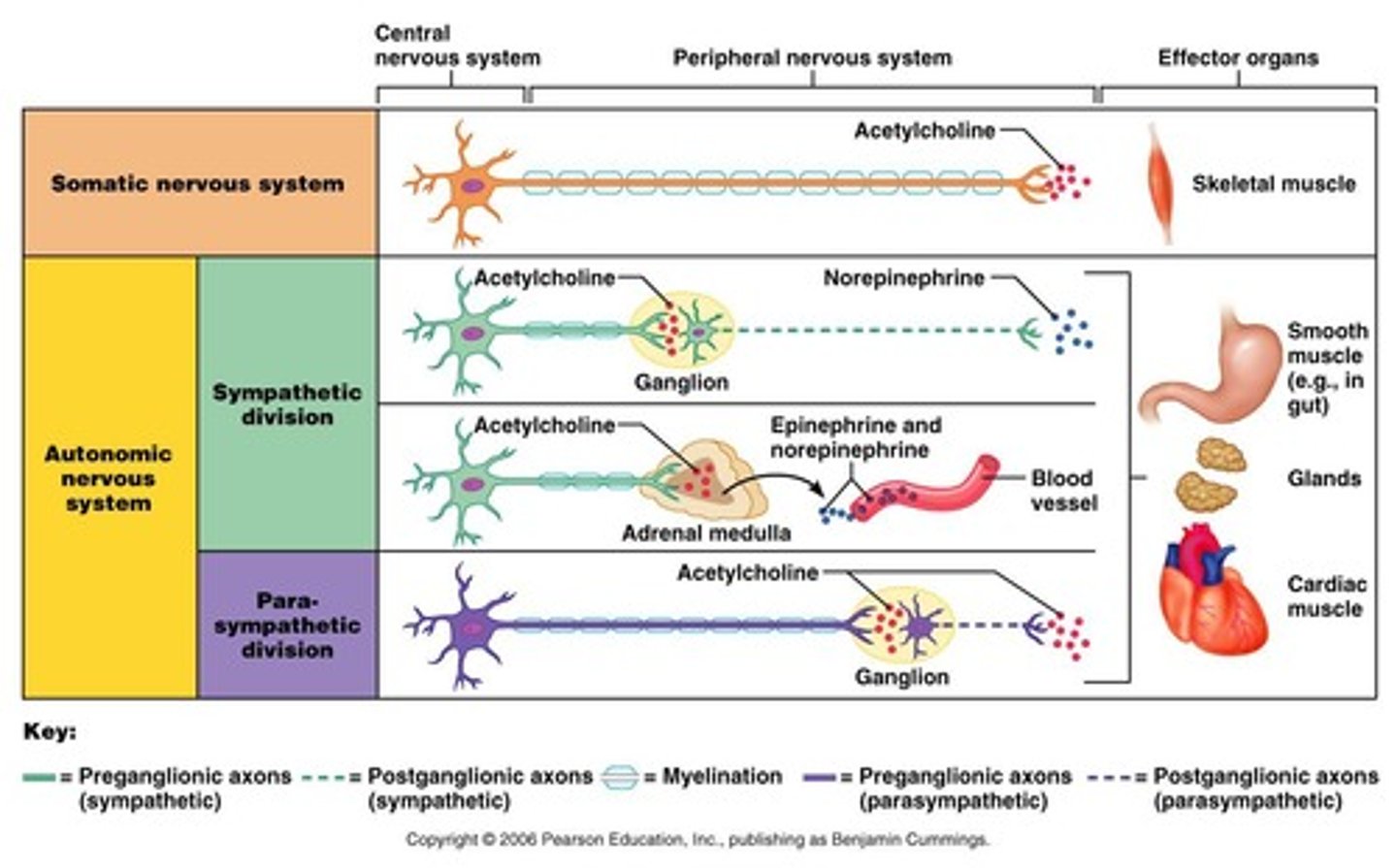
What are the effectors of the Somatic motor system?
Skeletal muscle.

What type of motor output is not consciously controlled?
Autonomic motor.
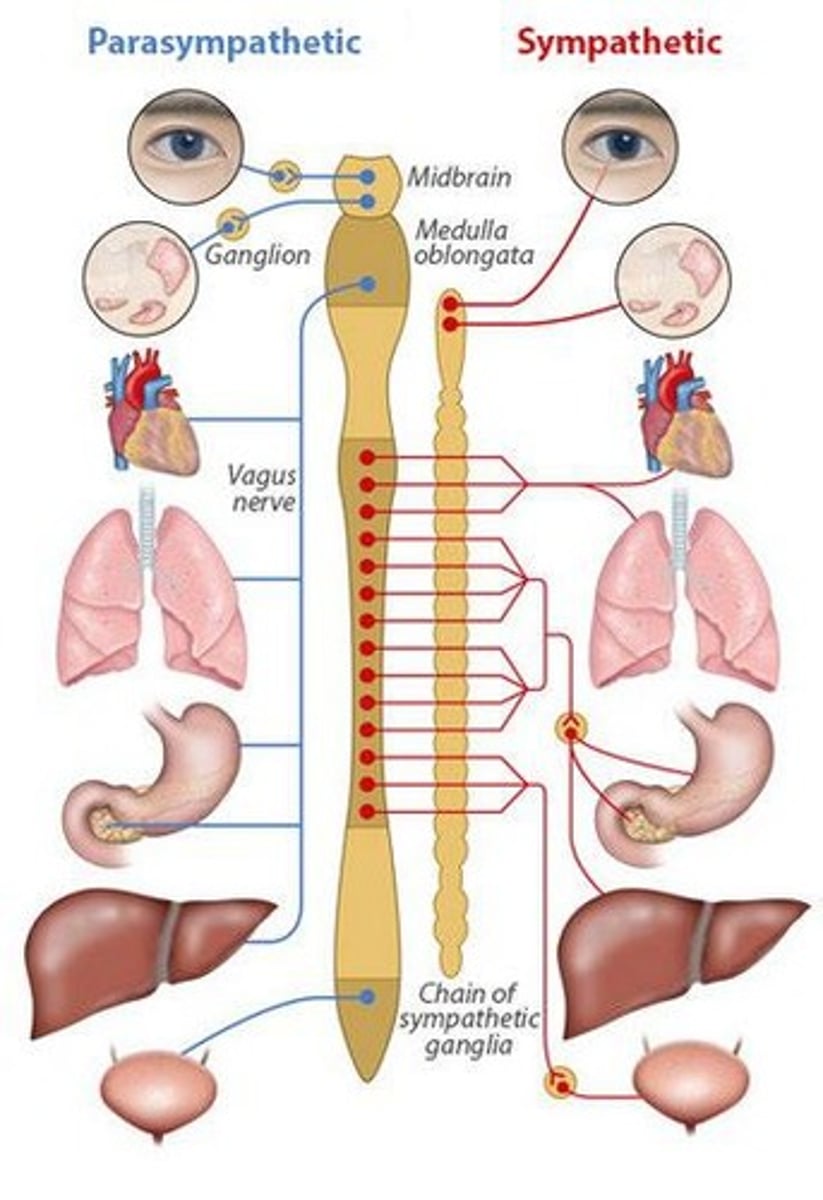
What are the effectors of the Autonomic motor system?
Glands, smooth muscle, and cardiac muscle.
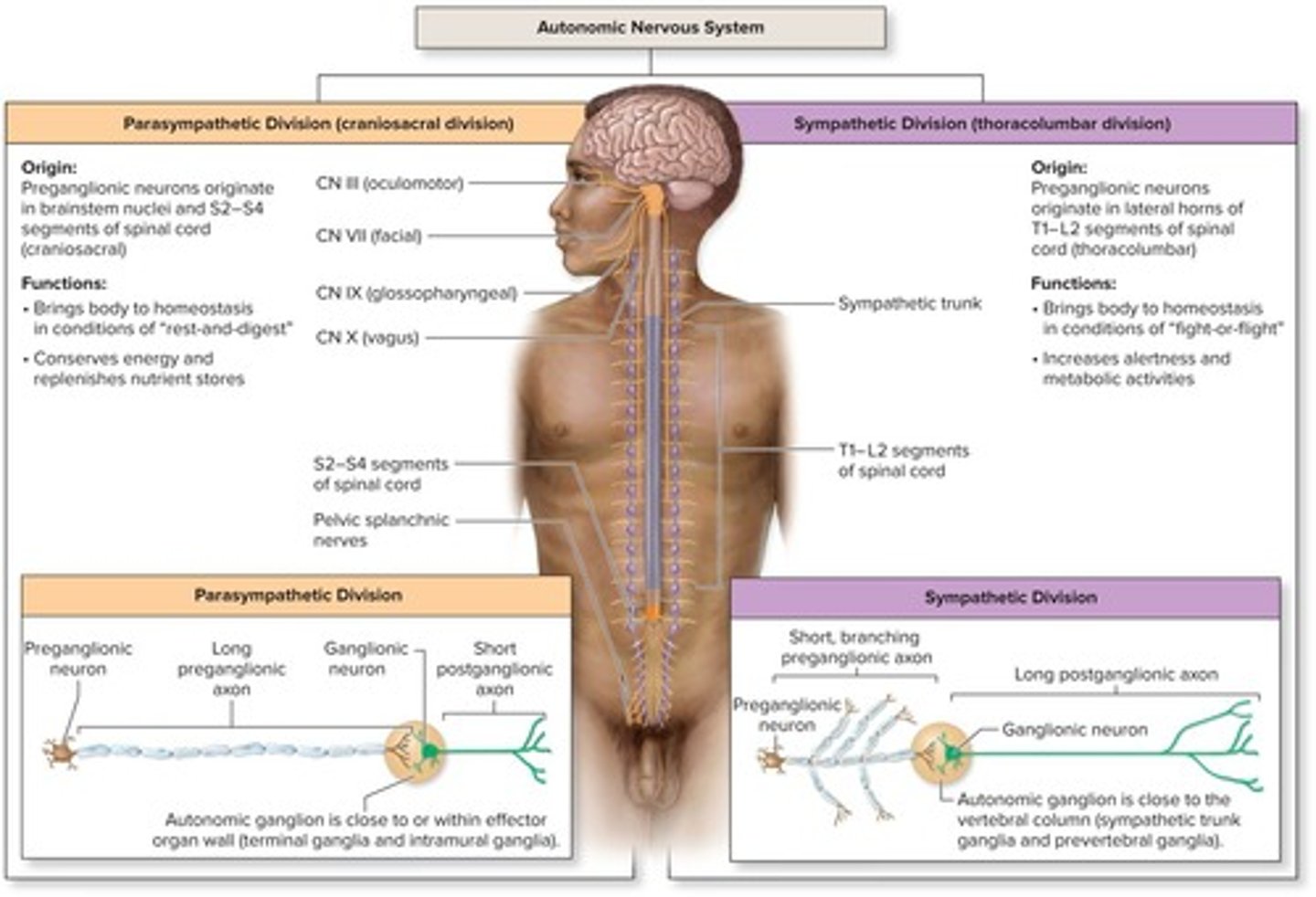
What role does the Autonomic motor system play in the body?
It functionally maintains homeostasis.
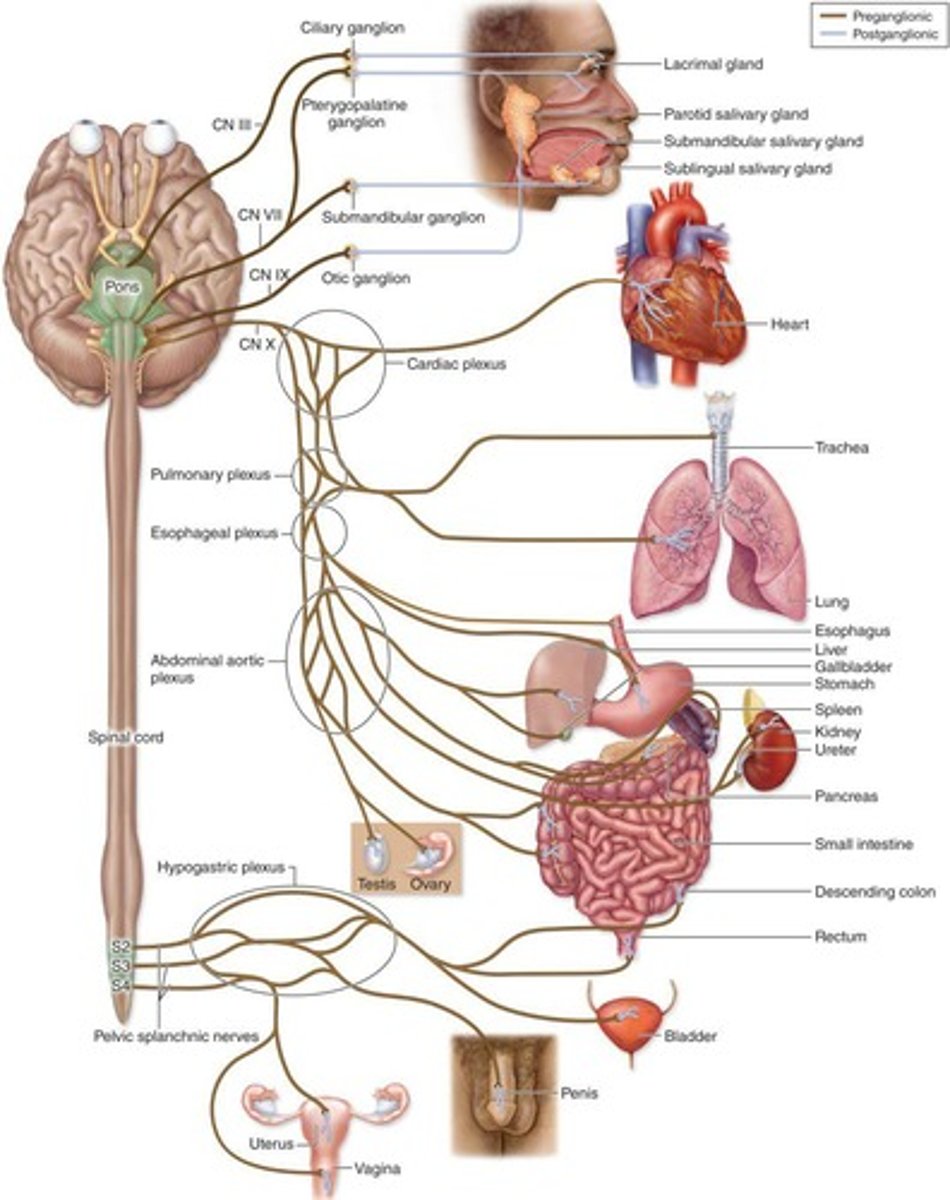
What are the two main divisions of the nervous system?
The two main divisions are the Somatic Nervous System and the Autonomic Nervous System.
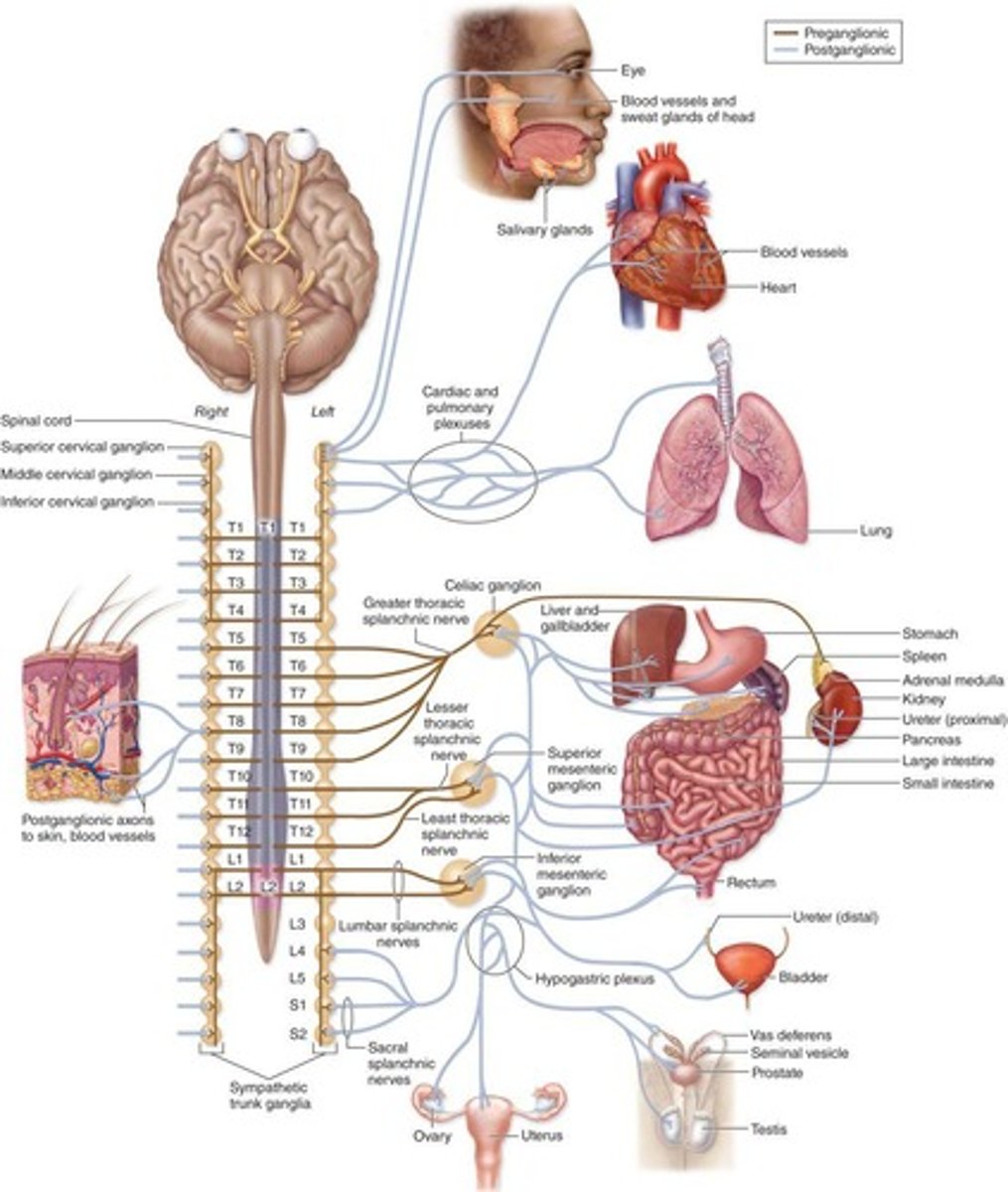
What processes does the Somatic Nervous System control?
It controls processes that are consciously perceived or controlled, including somatic sensory and somatic motor functions.
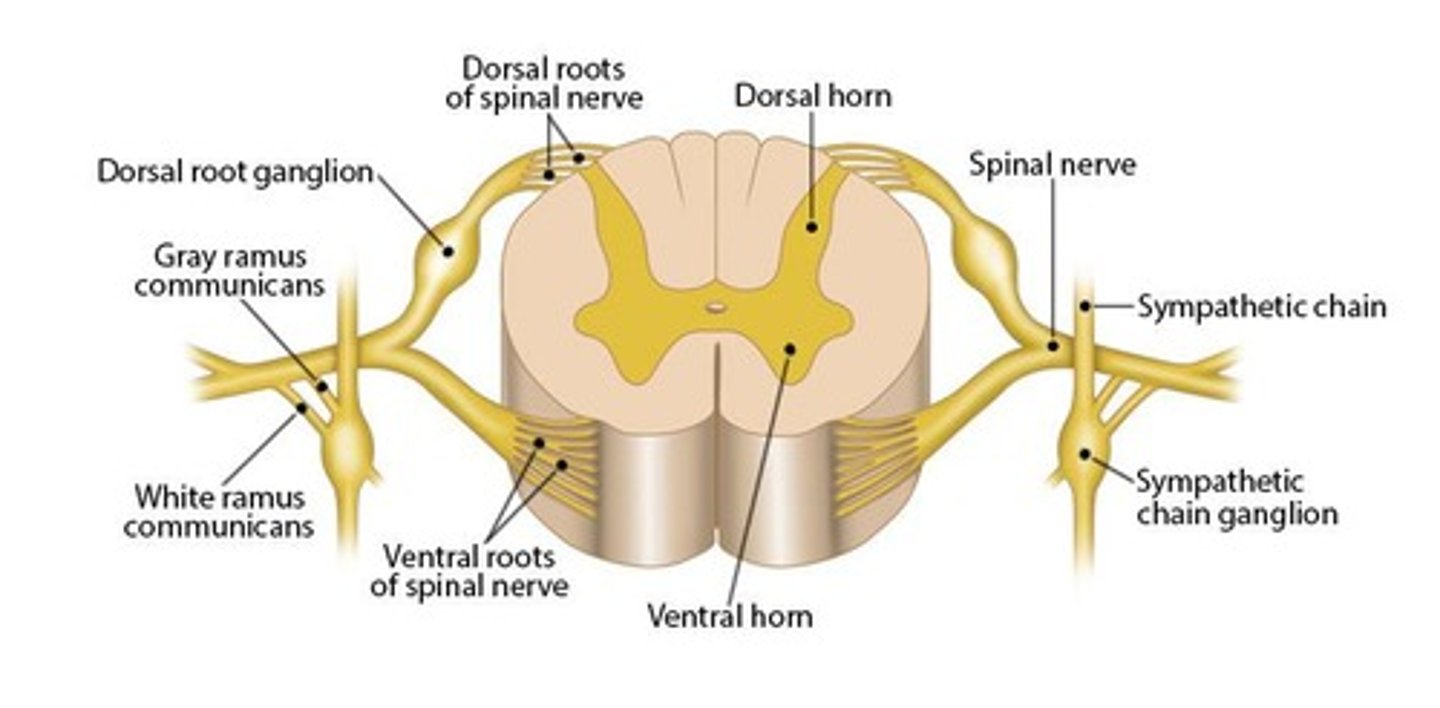
What is the role of the Somatic sensory system?
It detects and transmits information from the special senses, skin, and proprioceptors to the CNS.
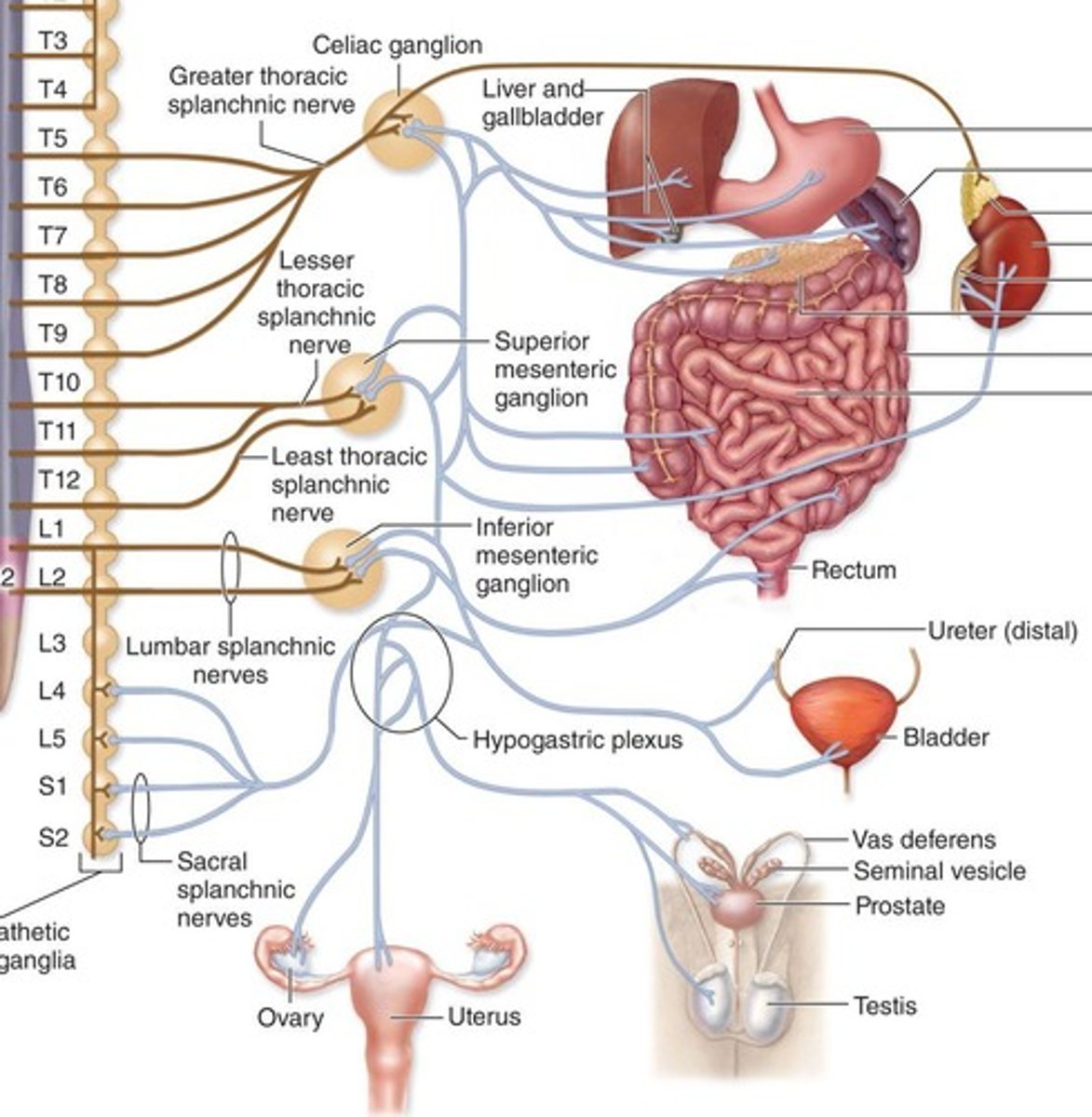
What does the Somatic motor system do?
It initiates and transmits nerve signals from the CNS to skeletal muscles.
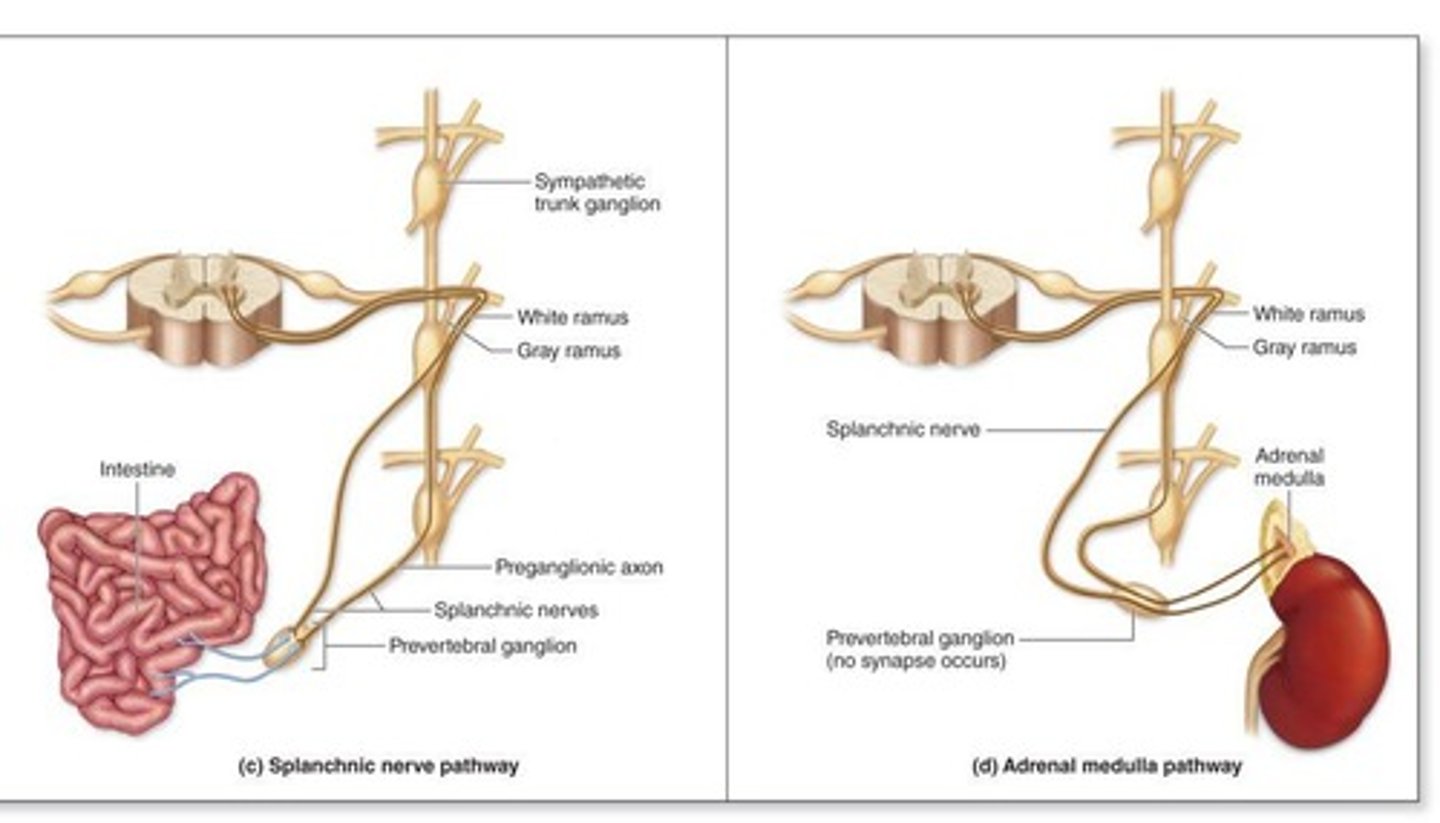
What is another name for the Autonomic Nervous System?
It is also called the visceral nervous system.

What functions does the Autonomic Nervous System regulate?
It regulates processes below the conscious level and maintains homeostasis.
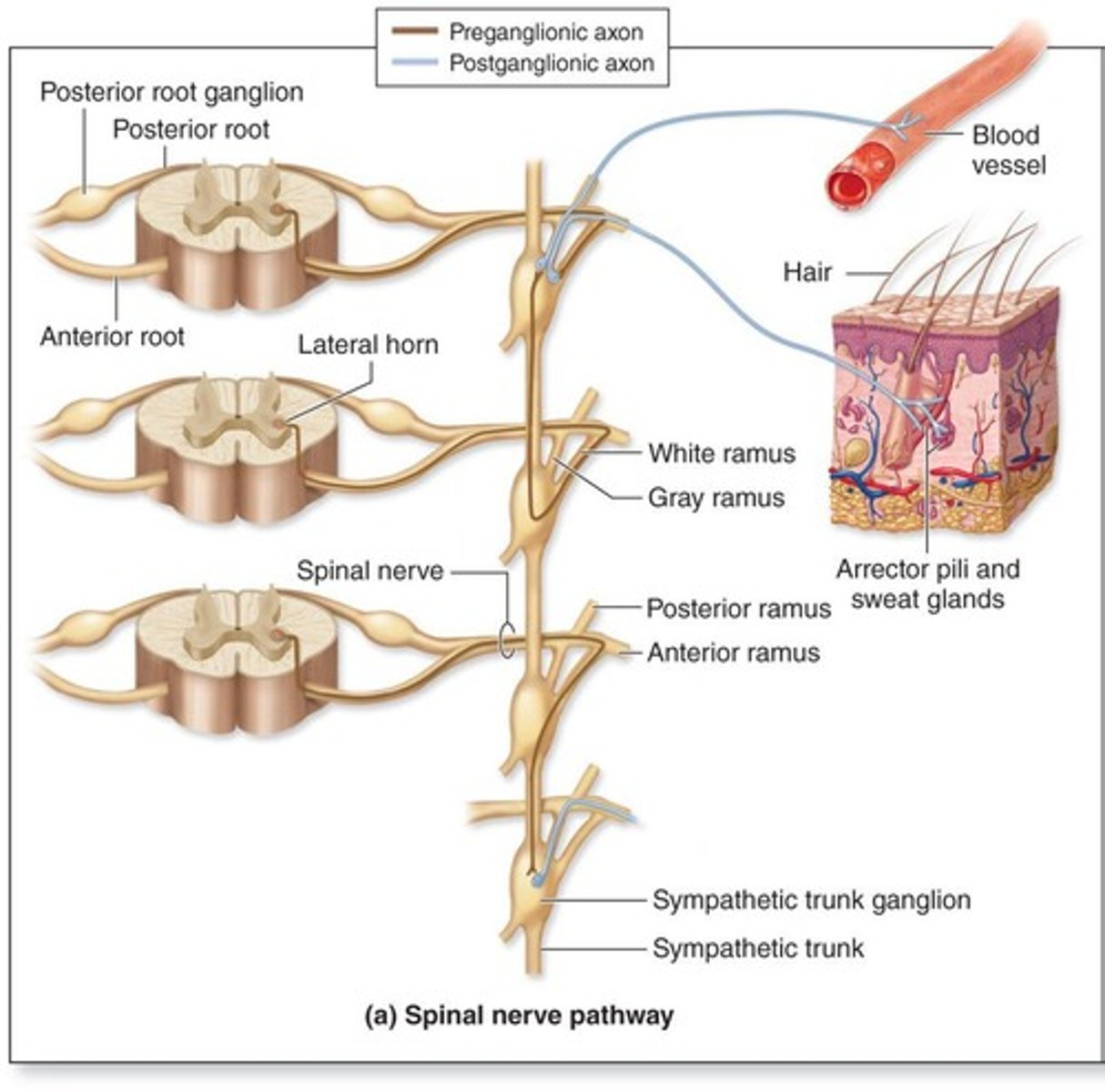
What is the role of the Visceral sensory system?
It detects stimuli from the viscera and blood vessels and transmits this information to the CNS.
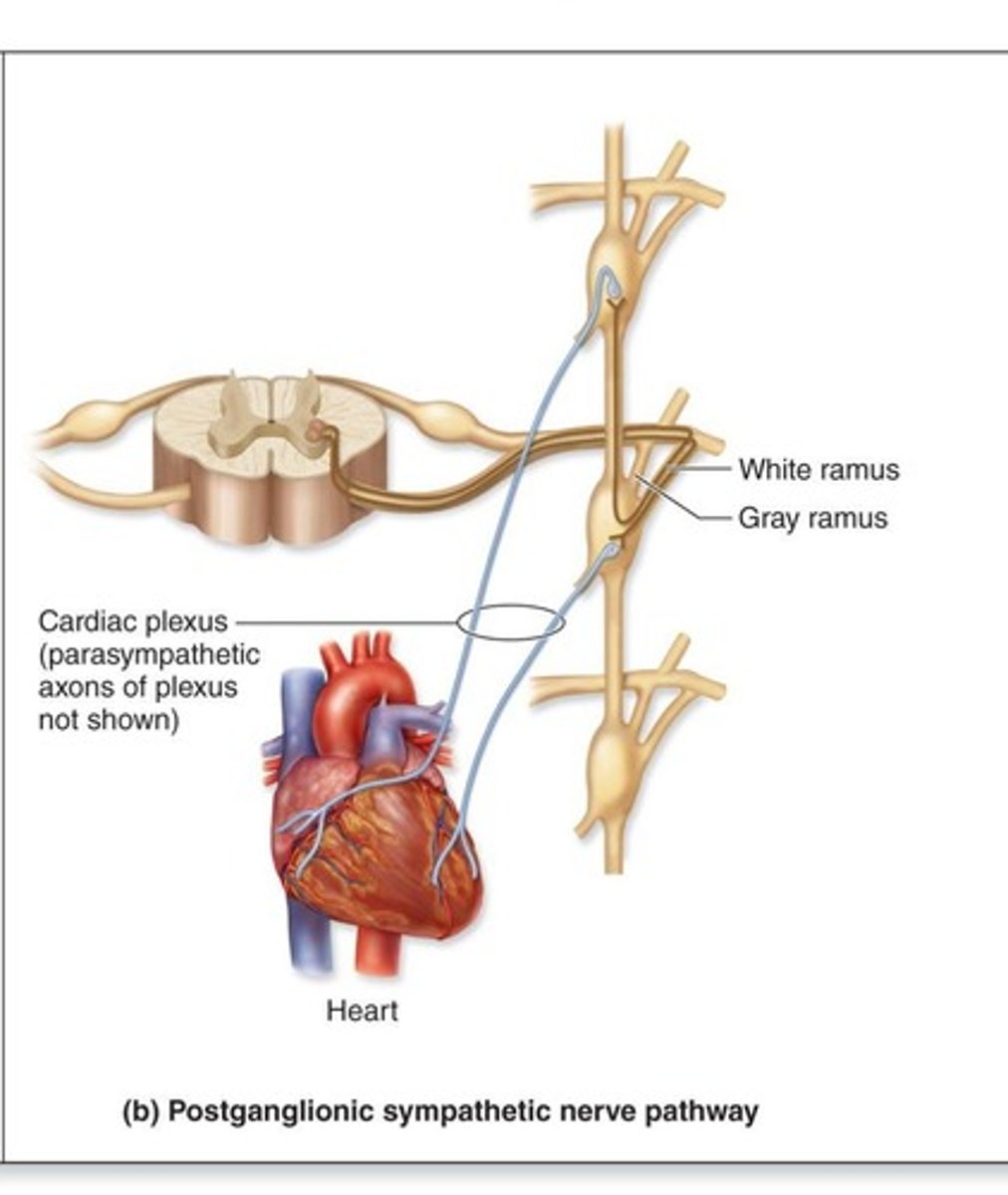
What does the Autonomic motor system transmit signals to?
It transmits signals from the CNS to cardiac and smooth muscles and glands.

What is a key difference between the autonomic and somatic nervous systems in terms of nerve pathways?
The autonomic nerve pathway consists of two-neuron chains, while the somatic nervous system uses a single neuron.
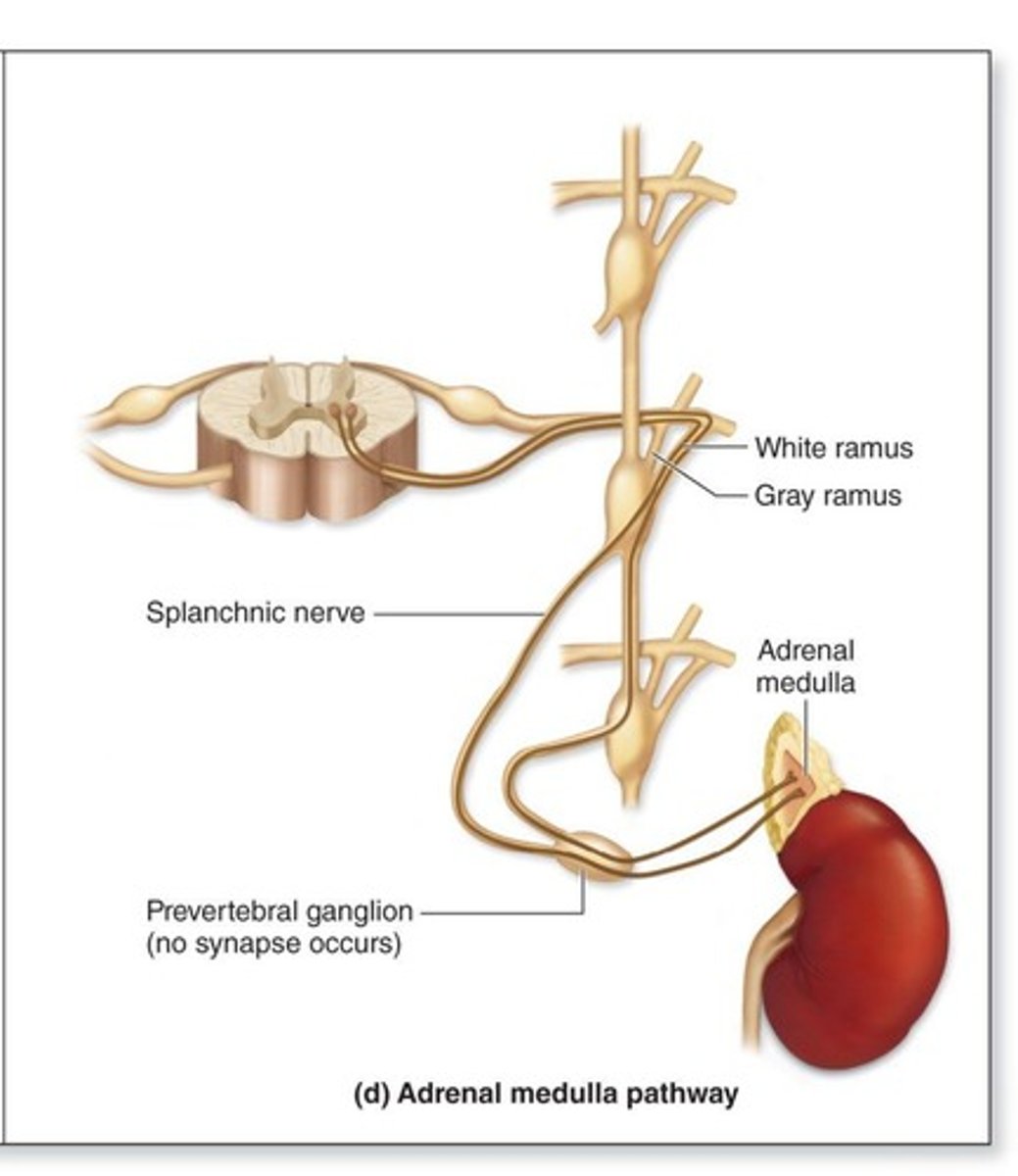
Where is the cell body of the first neuron in the autonomic pathway located?
It is located within the CNS.
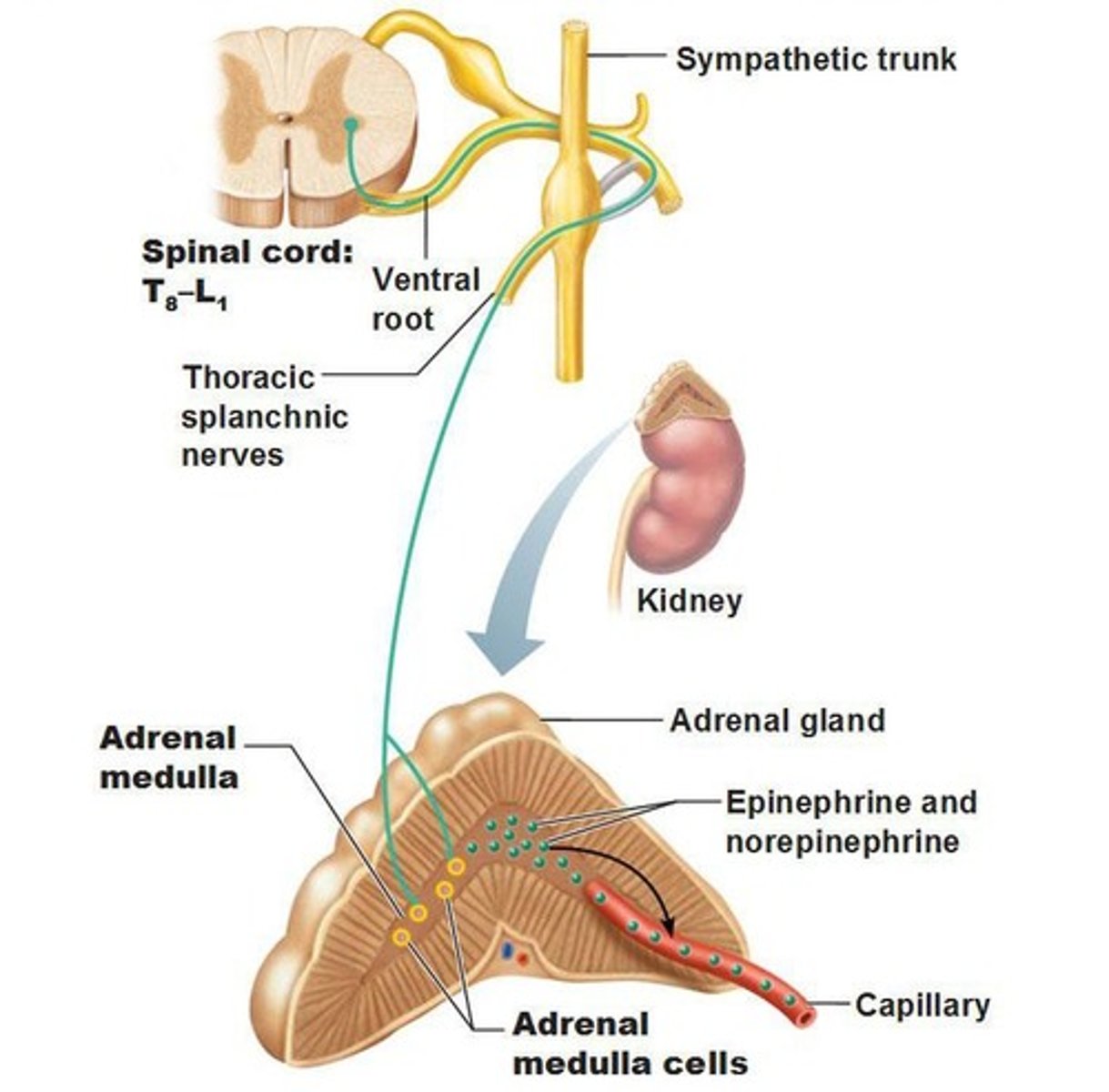
What happens to the axon of the second neuron in the autonomic pathway?
The axon (post-ganglionic fiber) innervates the effector organ.
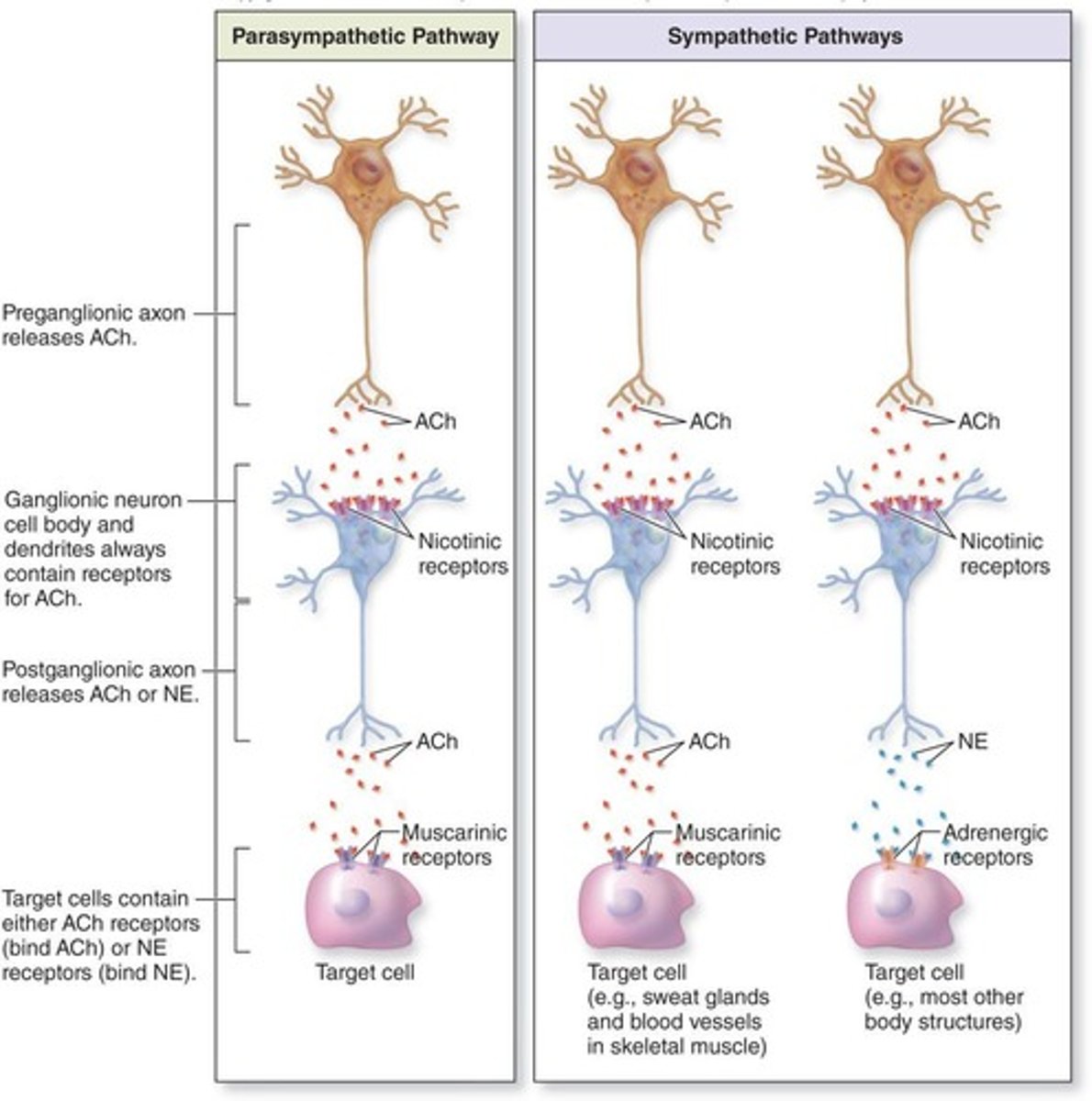
What are the two subdivisions of the Autonomic Nervous System?
The two subdivisions are the Sympathetic and Parasympathetic nervous systems.
What is the primary function of the Sympathetic nervous system?
It is responsible for the 'fight-or-flight' response, mobilizing the body during exertion, excitement, or emergencies.
What physiological changes occur during sympathetic activation?
Increased heart and respiration rates, blood flow to skeletal and cardiac muscle, and sweating.
What is the primary function of the Parasympathetic nervous system?
It promotes maintenance functions and energy conservation, often referred to as 'rest-and-digest'.
What does SLUD stand for in the context of the Parasympathetic nervous system?
SLUD stands for salivation, lacrimation, urination, and defecation.
What are the anatomical origins of the Preganglionic cell bodies in the Parasympathetic system?
They originate from cranial and sacral regions.
What are the anatomical origins of the Preganglionic cell bodies in the Sympathetic system?
They originate from thoracic and lumbar regions.
How do the lengths of preganglionic fibers differ between the Parasympathetic and Sympathetic systems?
Parasympathetic fibers are long, while Sympathetic fibers are short.
Where are the ganglia located in the Parasympathetic system?
They are located near the target organ or within the wall of the organ.
Where are the ganglia located in the Sympathetic system?
They are located near the spinal cord.
What is the degree of response in the Parasympathetic system?
The response is local.
What is the degree of response in the Sympathetic system?
It can be mass activation (many systems simultaneously) or local.
What is the anatomical complexity of the Sympathetic nervous system?
It is more complex, with cell bodies housed in the lateral horn of the spinal cord between T1 and L2.
What are the three types of cervical ganglia in the sympathetic nervous system?
Superior, Middle, and Inferior cervical ganglia.
What is the function of the superior cervical ganglia?
It provides postganglionic fibers to the head and neck, as well as some thoracic areas.
What do the middle and inferior cervical ganglia supply?
Both provide postganglionic fibers to thoracic viscera.
What are rami communicantes?
They connect the spinal nerves to each sympathetic trunk and consist of two types: white ramus communicans and gray ramus communicans.
What are sympathetic splanchnic nerves?
Preganglionic fibers that do not synapse in a sympathetic trunk ganglion and travel to most abdominal and pelvic viscera, terminating in collateral (prevertebral) ganglia.
What is the role of collateral ganglia in the sympathetic nervous system?
They serve as termination points for sympathetic splanchnic nerves that do not synapse in the sympathetic trunk.
What connects the spinal nerves to each sympathetic trunk?
Ramus
What do the white ramus communicans carry?
Pre-ganglionic axons from T1-L2 to the sympathetic trunk.
What do the gray ramus communicans carry?
Post-ganglionic axons from the sympathetic trunk to the spinal nerve.
What is the origin and synapse point of the greater thoracic splanchnic nerve?
Originates from T5-T9 and synapses in the celiac ganglion.
What is the origin and synapse point of the lesser thoracic splanchnic nerve?
Originates from T10-T11 and synapses in the superior mesenteric ganglion.
What is the origin and synapse point of the least thoracic splanchnic nerve?
Originates from T12 and synapses in the superior mesenteric ganglion.
What is the origin and synapse point of the lumbar splanchnic nerve?
Originates from L1-L2 and synapses in the inferior mesenteric ganglion.
What do sacral splanchnic nerves originate from?
Postganglionic fibers originate from sympathetic sacral ganglion.
Where are prevertebral (collateral) ganglia located?
Anterior to the vertebral column on the anterolateral wall of the aorta, only in the abdominopelvic cavity.
What do postganglionic fibers of the celiac ganglion innervate?
Stomach, spleen, liver, gall bladder, proximal portion of duodenum, and part of pancreas.
What do postganglionic fibers of the superior mesenteric ganglion innervate?
Distal half of duodenum, the rest of small intestine, proximal portion of large intestine, part of pancreas, kidneys, and proximal part of ureters.
What do postganglionic fibers of the inferior mesenteric ganglion innervate?
Distal part of large intestine, rectum, urinary bladder, distal ureters, and most of the reproductive organs.
What are the four types of sympathetic pathways?
Spinal nerve pathway, postganglionic sympathetic nerve pathway, splanchnic nerve pathway, and adrenal medulla pathway.
What is the target of the spinal nerve pathway?
Skin of the torso, neck, limbs, including sweat glands, blood vessels of the skin, and arrector pili muscles.
What is unique about the postganglionic sympathetic nerve pathway?
It does not use the gray ramus and extends directly to its target organ.
What do splanchnic nerve pathways target?
Abdominal and pelvic organs.
What is the role of the adrenal medulla pathway?
Directly innervates the adrenal medulla and terminates on neurosecretory cells.
What hormones does the adrenal medulla secrete?
20% Norepinephrine (NorE) and 80% Epinephrine (Epi).
What are the two main neurotransmitters of the ANS?
Norepinephrine (NorE) and acetylcholine (ACh).
What are cholinergic fibers?
Fibers that release acetylcholine (ACh).
What are adrenergic fibers?
Fibers that release norepinephrine (NorE).
What are nicotinic receptors?
Cholinergic receptors that are always excitatory and located on post-ganglionic cell bodies and skeletal muscles.
What are muscarinic receptors?
Cholinergic receptors that can be either excitatory or inhibitory, located on effector cell membranes.
What are the types of adrenergic receptors?
Alpha (α1, α2) and Beta (β1, β2, β3) receptors.
What is the function of the autonomic reflexes?
To regulate involuntary body functions, similar to somatic reflex arcs but with two neurons in the motor component.
What is the top level of control for the ANS?
The hypothalamus.
How do sympathetic and parasympathetic systems interact?
They frequently innervate the same organ and generally exert opposite effects, known as dual reciprocal innervation.